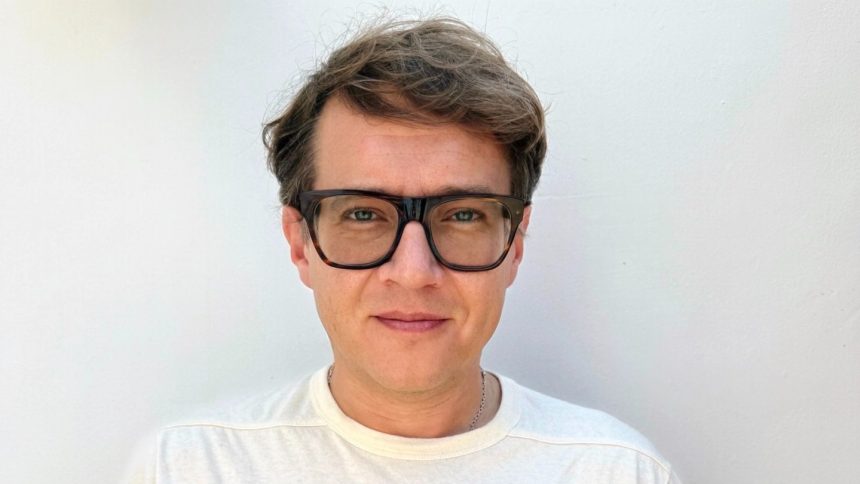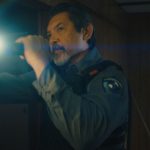Controversial Director Ilya Khrzhanovsky on Failing at Venice, Getting Banned in Russia, Ordering 70 Tons of Cabbage, and Casting Criminals as Judges
Russia-born director and artist Ilya Khrzhanovsky whose work is the focus of a curated “tribute to” retrospective of his films at the 31st edition of the Sarajevo Film Festival. But during a Sarajevo masterclass on Wednesday, he gave some insights into his wild world of creativity, from failing at the Venice Film Festival with his first film and Russia banning it to his expansive and controversial Dau project, all the way to ordering 70 tons of cabbage heads to his set and casting criminals as judges.
Born in Russia, Khrzhanovsky graduated from the Russian State Institute of Cinematography (VGIK). He has spoken out against Russia’s invasion of Ukraine. Last year, the Russian Ministry of Justice added him to its list of foreign agents, and he renounced his Russian citizenship.
His debut feature 4 won the Tiger Award at the International Film Festival Rotterdam in 2005 after falling flat at the Venice Film Festival a year earlier. His films Dau. Natasha and Dau. Degeneration screened at the Berlin Film Festival in 2020. The former won the Silver Bear for outstanding artistic contribution to cinematography that year.
His first feature 4 premiered in 2004 at Venice, but it wasn’t the instant hit that the director had hoped for. “In Venice, when I showed the movie, it was a real fail. Most of the audience left,” Khrzhanovsky recalled on Wednesday. “It was a kind of shock, because I was sure I had done something unique, great, and now all the world would celebrate it. I think 70 percent of the public left – at least. I think there were supposed to be three screenings, and they canceled one.”
You Might Also Like
After his return to Russia, “this movie was immediately forbidden,” the director continued. “And then the Minister of Culture told me what I should cut out – it was 40 minutes. And I said, ‘No, I will not cut it’.” He recalled the feeling at that stage that 4 was an “absolute failure.”
But then Rotterdam film festival selectors watched the movie and decided to screen it in competition. “And then everything was opposite to Venice in Rotterdam,” Khrzhanovsky emphasized. “It was a real success. All the screenings were sold out. There were extra screenings. … And then I just started to get prizes. It was a good lesson that festival success and everything are very relative.”
For the past 15 years-plus, the creative has been focusing on his expansive Dau, originally conceived as a biopic of Nobel prize-winning Soviet physicist Lev Landau, nicknamed Dau, before mutating into a vast immersive artwork experience, including a digital platform, in addition to the first film that came out in 2019.
In 2009, after building a huge recreation of a secret Stalin-era science institute in a former sports arena in the Ukrainian town of Kharkov, Khrzhanovsky and his team decided to recruit non-professional actors to live and work on set, with some effectively staying in character for as long as three years. With roving cameras potentially recording every conversation, the experience was likened to a “Soviet Truman Show.” And it led some insiders to complain of mistreatment on set, including graphic violence and allegations of an oppressive environment for women. Khrzhanovsky denied the allegations.
Khrzhanovsky illustrated his ambition for the project and his aim to “create the feeling of another type of reality” with some surprising anecdotes on Wednesday. For example, he turned audience heads when he shared matter-of-factly: “I cast 352,000 people.” Also, for one scene, he recalled, “we brought in 70 tons of cabbage and put some concrete on them.”
But it’s not all about superlatives for the creative. “In Soviet courts, actually in Russian courts as well as we can see, all the decisions were made before the [court] process started,” Khrzhanovsky said. “So, I decided to invite people who know a lot about court – criminals – to play judges” in the immersive Dau experience. He then showed some photos, explaining: “They are criminals. This guy, for example, his nickname is butcher. For three hours of material, all the dialogues were improvised, except that we knew what the results should be, what kind of decision they would make.”
Describing the size of the immersive experience, Khrzhanovsky mentioned an area of 13,000 square meters, “probably the biggest set in Europe,” explaining: “For almost three years, people lived and worked there. If you decided to go there, you would probably keep your name and your profession, but your biography would go back in time for like 50, 60 years.”
For example, there was a cleaning lady. “She just cleaned the floor. Of course, she used not contemporary chemicals, but old chemicals,” the artist said. “And she earned the salary in Soviet rubles, because we wanted to have all the elements of real life. And if you wanted to have a better salary or have some potential, you could also become a member of the Communist Party. So, then the people made choices inside this space.”







